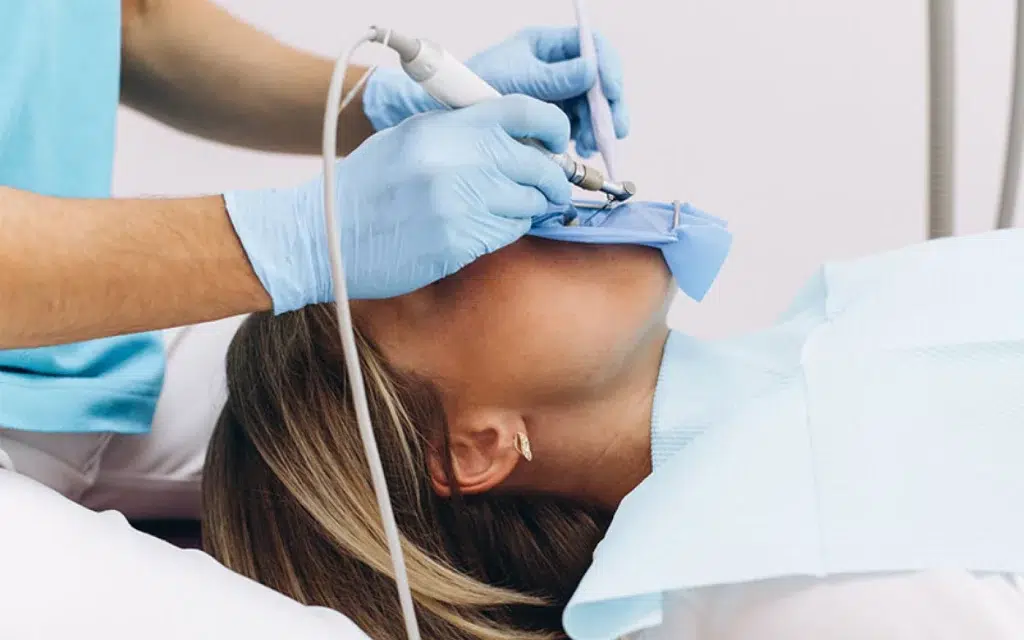Visiting the dentist can be a scary experience for many of us. Fear and anxiety often prevent people from getting the dental care they need. This is where sedation dentistry comes into play. Sedation helps patients relax and feel comfortable during dental procedures. At our clinic in Dallas, we offer various sedation options to make your visit less stressful and more pleasant.
Sedation dentistry is about more than just easing anxiety. It also allows us to perform procedures more efficiently by keeping you calm and still. Whether it’s a simple cleaning or a more complex procedure, sedation can be a game-changer for those who dread the dentist’s chair. We focus on providing effective sedation options that suit your specific needs.
Understanding how sedation works and knowing your options can make a big difference. In the following sections, we will explore different types of sedation, how to choose the best one for your needs, and what to expect before and after your appointment. Knowledge is power, and our goal is to equip you with all the information you need for a stress-free dental experience.
Understanding Sedation Dentistry: What It Is and How It Works
Sedation dentistry helps you relax during dental treatments. It involves using medication to make you feel calm and comfortable. We use it to reduce anxiety and fear, which are common reasons people avoid the dentist. Sedation can range from mild relaxation to deep sleep, depending on what you need.
There are different levels of sedation. Minimal sedation makes you relaxed but awake, while moderate sedation might make you slur your words and not remember much of the procedure. Deep sedation makes you on the edge of consciousness but still able to be awakened, and general anesthesia makes you completely unconscious. Our goal is to choose the right level of sedation to match the procedure’s complexity and your comfort level.
Different Types of Sedation Options Available in Dallas
We offer several types of sedation to meet your needs. The most common are inhaled sedation, oral sedation, and intravenous (IV) sedation. Inhaled sedation uses nitrous oxide, or laughing gas, which you breathe in through a mask. It helps you relax quickly, and its effects wear off soon after you stop inhaling it, allowing you to drive home safely.
Oral sedation involves taking a pill before your appointment. This type of sedation can make you drowsy but still awake. The dosage can vary, with higher doses making you sleep during the procedure. IV sedation is administered through a vein, making it work quickly. This method allows us to adjust the sedation level as needed during the procedure. It is typically used for more complex or longer dental treatments. Each type of sedation has its benefits, and we help you choose the best option for your needs and comfort.
How to Determine the Right Sedation Option for Your Dental Procedure
Deciding on the right sedation option for your dental procedure involves several factors. First, we consider the complexity of the procedure. For simple procedures, mild sedation like nitrous oxide might suffice. For more invasive treatments, stronger sedation methods such as oral or IV sedation may be recommended. We also take into account your level of anxiety. If dental visits make you very nervous, a higher level of sedation can make the experience more manageable.
Your medical history is another important factor. We review any current medications you’re taking and any pre-existing conditions. This helps us determine which sedation method is safe and effective for you. We also consider your previous experiences with sedation, if any. During your consultation, we discuss all these details with you to find the best sedation option. Our goal is to make your dental procedure as comfortable and stress-free as possible.
Preparing for and Recovering from Sedation Dentistry
Preparation for sedation dentistry involves a few important steps. Before the procedure, we provide you with detailed instructions tailored to your specific sedation method. For example, if you’re receiving oral sedation, you might be instructed to avoid eating or drinking for a certain period before your appointment. For IV sedation, we may advise you to wear comfortable clothing and arrange for someone to drive you home afterward.
Recovery from sedation is usually straightforward, but it depends on the type of sedation used. For mild sedation like nitrous oxide, the effects wear off quickly, and you can resume normal activities almost immediately. For stronger sedation methods, like oral or IV sedation, you may feel groggy for a few hours and should rest at home. We give you specific post-procedure care instructions to ensure a smooth and safe recovery. Follow-up appointments help us monitor your progress and address any concerns you might have.
Conclusion
Understanding sedation dentistry can make your dental visits less intimidating and more comfortable. From mild options like nitrous oxide to stronger methods like IV sedation, we tailor our approach to meet your specific needs. Knowing what to expect and how to prepare can greatly enhance your experience.
At Dallas Periodontics and Dental Implants, we are dedicated to making every dental procedure as stress-free as possible. If you have concerns about dental treatments and are interested in exploring sedation options, we’re here to help. Contact Dallas Periodontics and Dental Implants today to learn more about how we can make your dental visits more comfortable.

